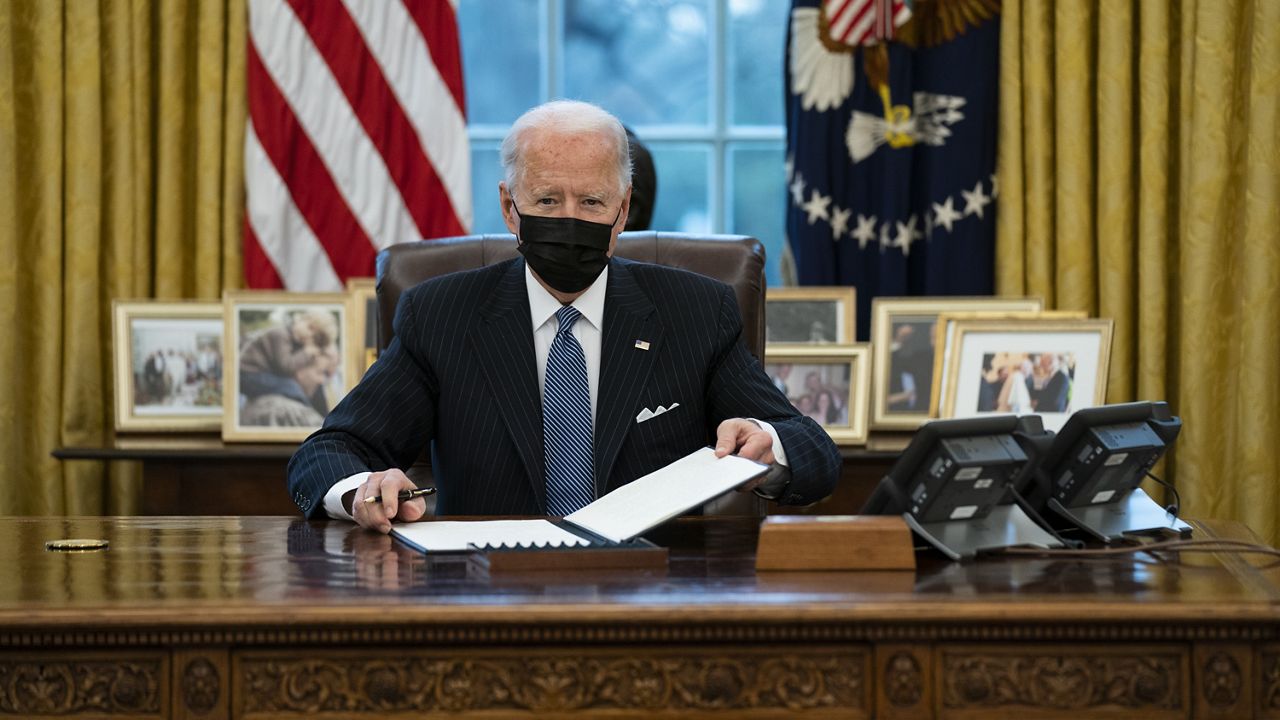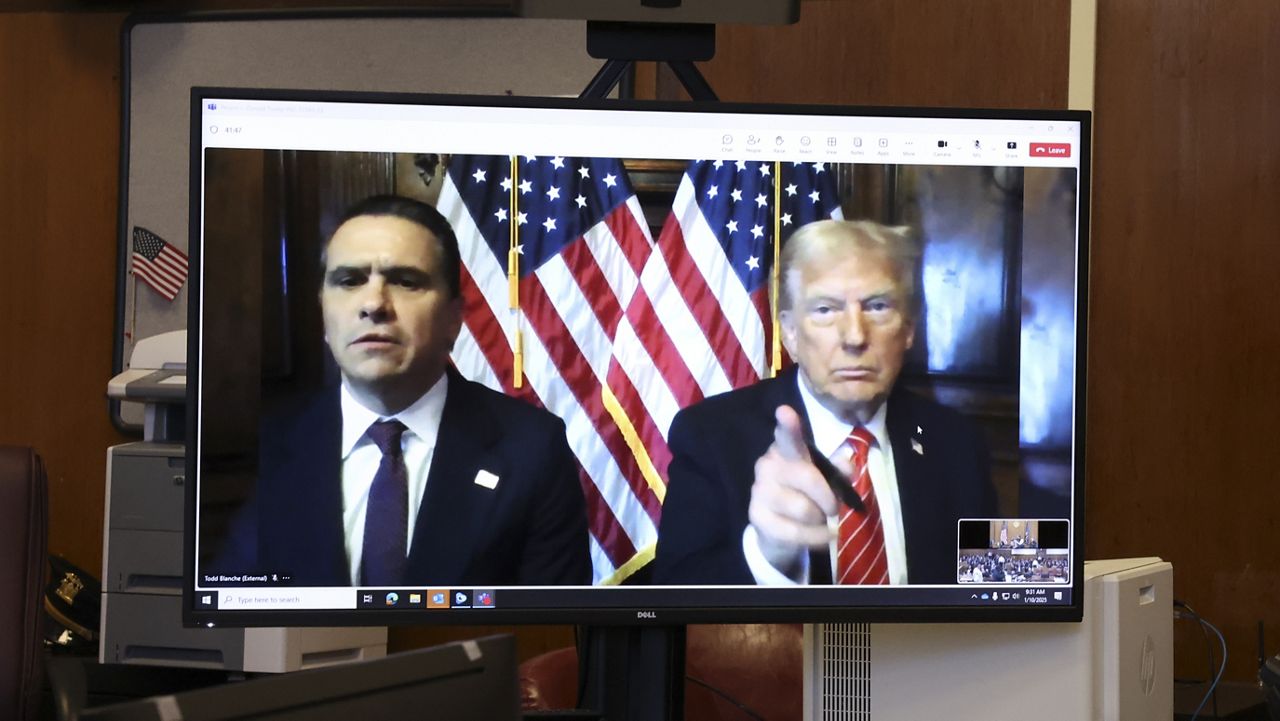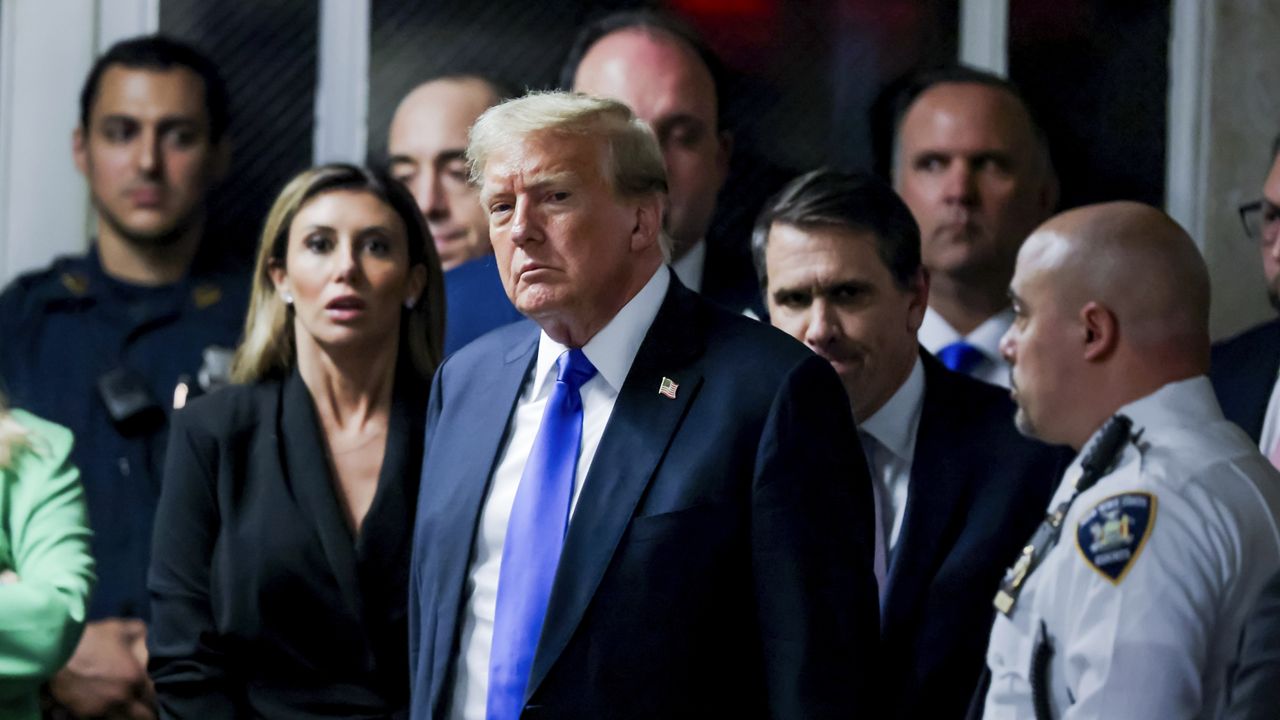President Joe Biden signed an executive order Monday to reverse a Pentagon policy that largely bars transgender individuals from joining the military, dumping a ban ordered by former President Donald Trump in a tweet during his first year in office.
What You Need To Know
- President Joe Biden signed an executive order to reverse a Pentagon policy that largely bars transgender individuals from joining the military
- "It’s simple: America is safer when everyone qualified to serve can do so openly and with pride," President Biden wrote on Twitter
- The ban was ordered by former President Donald Trump in a tweet during his first year in office
- The decision comes as Biden plans to turn his attention to equity issues that he believes continue to shadow nearly all aspects of American life
"Today, I repealed the discriminatory ban on transgender people serving in the military," Biden said on Twitter. "It’s simple: America is safer when everyone qualified to serve can do so openly and with pride.
"President Biden signed today an Executive Order that sets the policy that all Americans who are qualified to serve in the Armed Forces of the United States should be able to serve," a release from the White House reads. "The All-Volunteer Force thrives when it is composed of diverse Americans who can meet the rigorous standards for military service, and an inclusive military strengthens our national security."
Biden signed the executive order with Vice President Kamala Harris and Defense Secretary Lloyd Austin at his side. "What I'm doing is enabling all qualified Americans to serve their country in uniform," Biden said.
In a statement, Austin said that "the United States Armed Forces are in the business of defending our fellow citizens from our enemies, foreign and domestic. I believe we accomplish that mission more effectively when we represent all our fellow citizens. I also believe we should avail ourselves of the best possible talent in our population, regardless of gender identity. We would be rendering ourselves less fit to the task if we excluded from our ranks people who meet our standards and who have the skills and the devotion to serve in uniform."
"This is the right thing to do," Austin added. 'It is also the smart thing to do."
Biden was widely expected to overturn the Trump policy in his early days in office, and had the support of Biden's newly confirmed defense secretary, retired Army Gen. Lloyd Austin, who spoke of the need to overturn it during his Senate confirmation hearing last week.
“I support the president’s plan or plan to overturn the ban,” Austin said. “If you’re fit and you’re qualified to serve and you can maintain the standards, you should be allowed to serve.”
"President Biden believes that gender identity should not be a bar to military service, and that America’s strength is found in its diversity," the release from the White House reads. "This question of how to enable all qualified Americans to serve in the military is easily answered by recognizing our core values. America is stronger, at home and around the world, when it is inclusive. The military is no exception. Allowing all qualified Americans to serve their country in uniform is better for the military and better for the country because an inclusive force is a more effective force."
"Simply put, it’s the right thing to do and is in our national interest," it reads.
The decision comes as Biden plans to turn his attention to equity issues that he believes continue to shadow nearly all aspects of American life. Ahead of his inauguration, Biden's transition team circulated a memo from Ron Klain, now the White House chief of staff, that sketched out Biden's plan to use his first full week as president “to advance equity and support communities of color and other underserved communities."
The move to overturn the transgender ban is also the latest example of Biden using executive authority in his first days as president to dismantle Trump's legacy. His early actions include orders to overturn a Trump administration ban on travelers from several predominantly Muslim countries, stop construction of the wall at the U.S.-Mexico border, and launch an initiative to advance racial equity.
Biden is also scheduled to hold a ceremonial swearing-in ceremony on Monday at the White House for Austin, who became the nation's first Black defense secretary.
It was unclear how quickly the Pentagon can put a new policy in effect, and whether it will take some time to work out details.
Civil rights advocacy groups applauded the decision.
In a statement, the Human Rights Campaign said that, "for years, transgender patriots were forced to continue to hide their identity while serving in our military. But today, thanks to President Joe Biden, Secretary Lloyd Austin, and pro-equality voters across America, they may live and serve openly as themselves."
Until a few years ago service members could be discharged from the military for being transgender, but that changed during the Obama administration. In 2016, Defense Secretary Ash Carter announced that transgender people already serving in the military would be allowed to serve openly. And the military set July 1, 2017, as the date when transgender individuals would be allowed to enlist.
After Trump took office, however, his administration delayed the enlistment date and called for additional study to determine if allowing transgender individuals to serve would affect military readiness or effectiveness.
A few weeks later, Trump caught military leaders by surprise, tweeting that the government wouldn't accept or allow transgender individuals to serve “in any capacity” in the military. “Our military must be focused on decisive and overwhelming victory and cannot be burdened with the tremendous medical costs and disruption that transgender in the military would entail,” he wrote.
It took nearly two years, but after a lengthy and complicated legal battle and additional reviews, the Defense Department in April 2019 approved the new policy that fell short of an all-out ban but barred transgender troops and military recruits from transitioning to another sex and required most individuals to serve in their birth gender.
Under that policy, currently serving transgender troops and anyone who had signed an enlistment contract before the effective date could continue with plans for hormone treatments and gender transition if they had been diagnosed with gender dysphoria.
But after that date, no one with gender dysphoria who was taking hormones or has transitioned to another gender was allowed to enlist. Troops that were already serving and were diagnosed with gender dysphoria were required to serve in their birth gender and were barred from taking hormones or getting transition surgery.
Under the now-revoked Trump policy, a service member could be discharged based on a diagnosis of gender dysphoria if he or she is “unable or unwilling to adhere to all applicable standards, including the standards associated with his or her biological sex, or seeks transition to another gender.” And it said troops must be formally counseled and given a chance to change their decision before the discharge is finalized.
As of 2019, an estimated 14,700 troops on active duty and in the Reserves identify as transgender, but not all seek treatment. Since July 2016, more than 1,500 service members were diagnosed with gender dysphoria; as of Feb. 1, 2019, there were 1,071 currently serving. According to the Pentagon, the department spent about $8 million on transgender care between 2016 and 2019. The military’s annual health care budget tops $50 billion.
All four service chiefs told Congress in 2018 that they had seen no discipline, morale or unit readiness problems with transgender troops serving openly in the military. But they also acknowledged that some commanders were spending a lot of time with transgender individuals who were working through medical requirements and other transition issues.
The Associated Press contributed to this report.








